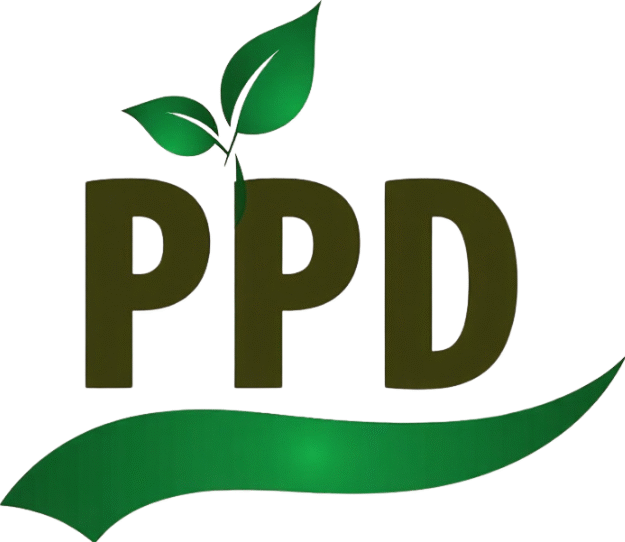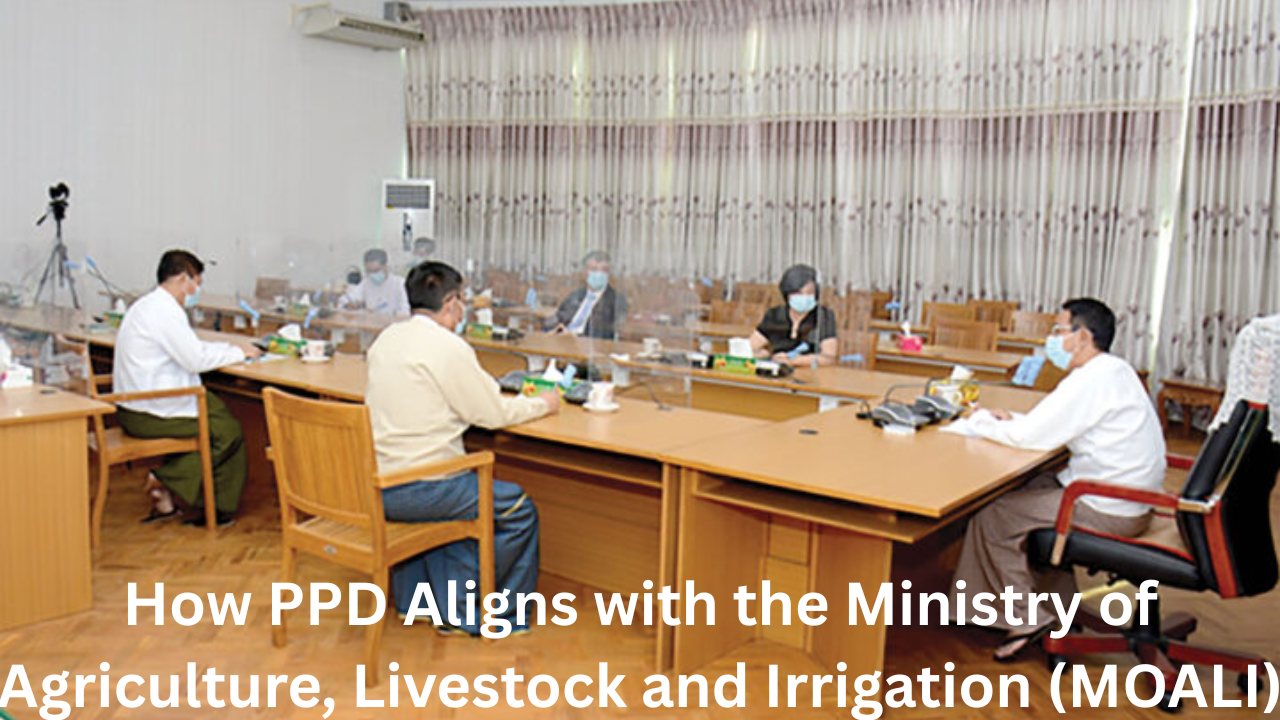
Introduction
The Plant Protection Division (PPD) plays a vital role in Myanmar’s agricultural development, acting as the primary authority on pest and disease management. However, its true strength comes from strategic alignment with the overarching goals of the Ministry of Agriculture, Livestock and Irrigation (MOALI). Through integration, coordination, and responsiveness, PPD ensures its programs serve national agricultural priorities while safeguarding plant health, biosecurity, and food security.
This article explores how PPD aligns with MOALI’s vision, policies, and multi-sectoral frameworks, highlighting the administrative, operational, and technical linkages between them.
Overview of MOALI’s Mandate
MOALI is the apex body responsible for the formulation and implementation of agricultural, livestock, and irrigation policies in Myanmar. It oversees multiple departments and divisions, including the Department of Agriculture (DoA), under which PPD functions.
MOALI’s Core Objectives:
- Achieve food security and safety
- Promote climate-resilient and sustainable agriculture
- Strengthen agricultural exports and trade facilitation
- Support farmer livelihoods through innovation and extension
- Ensure effective pest, disease, and disaster management
PPD’s alignment with these objectives ensures that its operations are not isolated but rather part of a unified agricultural strategy.
Administrative Positioning of PPD under MOALI
| Structure | Department/Division |
|---|---|
| Ministry | MOALI |
| Department | Department of Agriculture (DoA) |
| Division | Plant Protection Division (PPD) |
PPD operates directly under the DoA, which reports to MOALI. This three-tier structure ensures that PPD’s technical functions feed into ministerial goals and benefit from top-down policy guidance.
Key Areas of Strategic Alignment
PPD’s programs and responsibilities reflect MOALI’s mission through several integrated functions:
1. Plant Health and Food Security
PPD supports MOALI’s food security goals by preventing pest-induced crop losses. Through nationwide pest surveillance and early warning systems, PPD ensures that outbreaks are contained swiftly, securing food supply chains.
2. Phytosanitary Standards for Export
MOALI promotes agricultural exports to strengthen rural economies. PPD facilitates this by issuing phytosanitary certificates, ensuring pest-free shipments that meet international standards under the WTO-SPS Agreement and IPPC guidelines.
3. Climate-Smart Agriculture
Under MOALI’s climate adaptation strategy, PPD promotes Integrated Pest Management (IPM), biological controls, and pesticide risk reduction to minimize climate impact and environmental harm.
4. Disaster Response and Emergency Preparedness
PPD leads MOALI’s plant protection responses to natural disasters, pest invasions (e.g., locusts or fall armyworm), and post-flood disease outbreaks by organizing rapid surveillance and field-level mitigation teams.
5. Research, Innovation, and Extension
In cooperation with DAR and extension units, PPD ensures that MOALI’s research-driven objectives—like adoption of pest-resistant varieties—are implemented on the ground through field training and farmer demonstrations.
Collaborative Mechanisms Between PPD and MOALI Units
To align effectively, PPD collaborates with multiple MOALI departments and initiatives through structured channels.
| Collaboration Area | PPD’s Role | MOALI’s Role |
|---|---|---|
| Policy Implementation | Enforces plant protection policies | Develops national agricultural policies |
| Trade Facilitation | Provides phytosanitary inspection | Engages with trade bodies and WTO |
| Disaster Management | Deploys pest control units | Coordinates cross-sectoral response |
| Research & Extension | Conducts IPM and pest trials | Funds research and promotes innovation |
| Training Programs | Delivers training to extension staff and farmers | Sets priorities and allocates resources |
Achievements Through MOALI Alignment
PPD’s alignment with MOALI has led to several strategic achievements:
| Initiative | Impact |
|---|---|
| National Pest Surveillance Network | Real-time pest alerts across 80% of agricultural zones |
| Phytosanitary Certification System | Increased agri-export compliance to over 90% |
| IPM Adoption Campaign | Reduced synthetic pesticide use by 35% in key crops |
| Emergency Pest Response Units | Reduced crop loss in emergency situations by 40% |
| Training and Farmer Field Schools | Over 400,000 farmers reached annually |
Monitoring and Accountability
MOALI maintains oversight on PPD through performance evaluation frameworks. These include:
- Annual activity plans and budget approvals
- Semi-annual performance audits
- Reporting systems linking PPD regional offices with MOALI’s data centers
- Key performance indicators tied to national food security goals
PPD also participates in MOALI’s sectoral review meetings, national agricultural strategy consultations, and joint monitoring missions with international development partners.
Future Areas for Deepened Integration
PPD is continuously evolving to meet MOALI’s emerging priorities, such as:
- Digital Pest Intelligence Platforms: Linking PPD field data with MOALI’s national dashboards
- Public-Private Partnerships (PPP): Expanding MOALI-backed collaborations with agri-tech companies for pest forecasting and pesticide alternatives
- Regional Cooperation: Enhancing phytosanitary cooperation with ASEAN partners under MOALI-led frameworks
- Sustainable Input Regulation: Aligning with MOALI’s push for eco-friendly pest control inputs and policy reform
Overview Table
| Alignment Area | PPD Role | MOALI Objective |
|---|---|---|
| Food Security | Pest surveillance & response | Safe and sufficient food production |
| Export Readiness | Issuance of phytosanitary certificates | Boost international agricultural trade |
| IPM and Biocontrol | Promotion and field implementation | Reduce chemical dependency |
| Climate Resilience | Pest forecasting & sustainable practices | Climate-smart agricultural transformation |
| Research-Extension Link | Conducting field validations | Drive innovation to the grassroots |
| Policy Execution | Enforcing laws and procedures | Achieve strategic agriculture outcomes |
Top 3 FAQs
Q1: How is PPD connected to MOALI?
A1: PPD operates under the Department of Agriculture, a core unit within MOALI, aligning its programs with national agricultural goals.
Q2: How does PPD support Myanmar’s agricultural exports?
A2: By inspecting crops and issuing internationally recognized phytosanitary certificates to ensure export compliance.
Q3: Is PPD involved in national agricultural policy decisions?
A3: Yes, PPD contributes technical inputs to MOALI’s planning and strategy forums for plant health and biosecurity.

